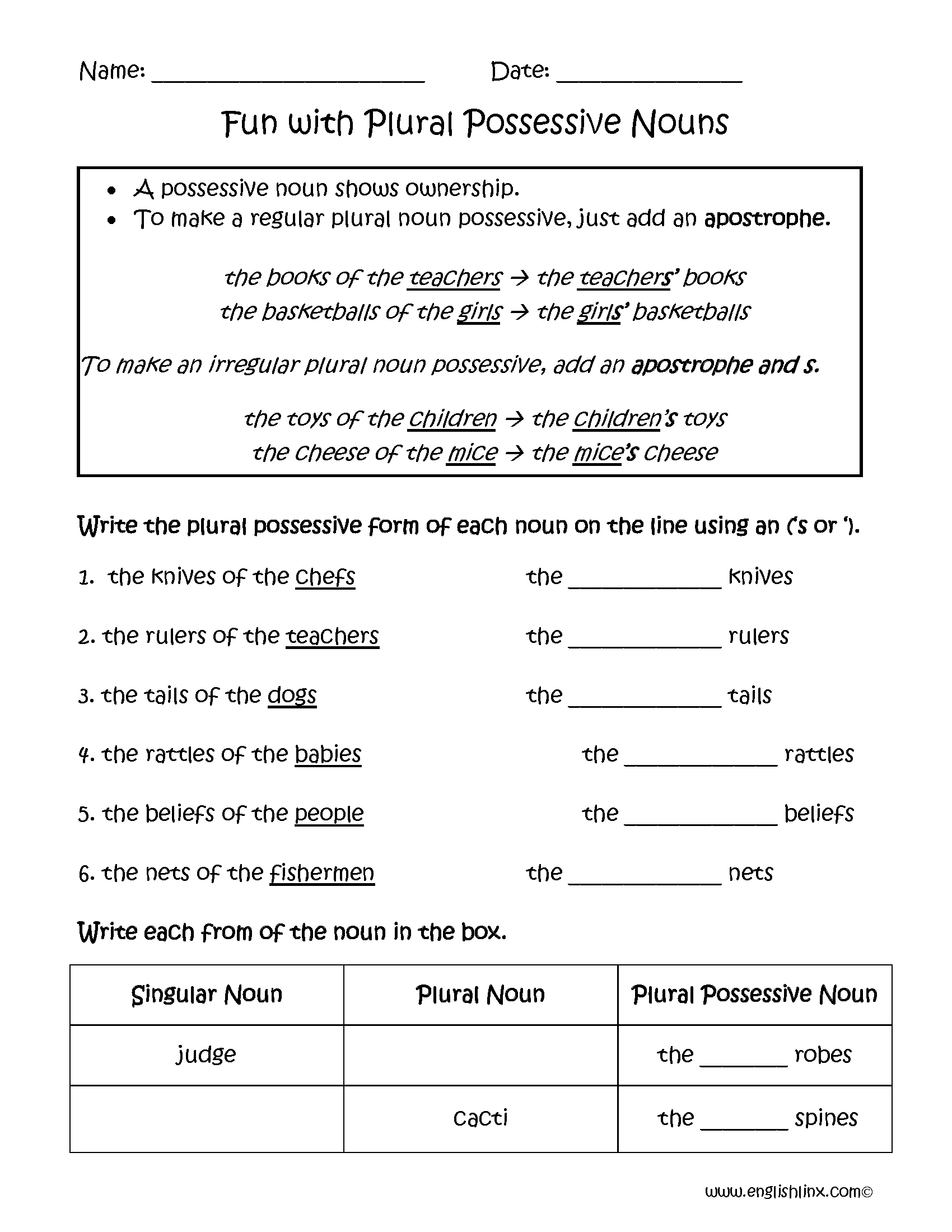When it comes to plural nouns possessive, there are certain rules that need to be followed in English grammar. Understanding how to correctly show possession with plural nouns is essential for clear and effective communication.
Plural nouns are words that refer to more than one person, place, thing, or idea. When these nouns show possession, an apostrophe is used to indicate that something belongs to the plural noun.
Rules for Plural Nouns Possessive
One of the basic rules for forming the possessive of a plural noun is to add an apostrophe after the ‘s’ at the end of the word. For example, “The students’ desks were lined up neatly in the classroom.” In this sentence, the apostrophe after the ‘s’ indicates that the desks belong to the students.
When a plural noun does not end in ‘s’, you should add an apostrophe followed by ‘s’ to show possession. For instance, “The children’s toys were scattered across the room.” Here, the apostrophe followed by ‘s’ shows that the toys belong to the children.
If a plural noun is irregular and does not follow the typical plural form rules, the possessive form is created by adding an apostrophe and ‘s’. For example, “The men’s soccer team won the championship.” The apostrophe and ‘s’ indicate that the team belongs to the men.
When dealing with plural nouns that are joint possessives, where two or more people or things share ownership, the apostrophe is placed after the last noun only. For example, “Tom and Jerry’s house is located on the corner.” In this sentence, the apostrophe after ‘Jerry’ indicates that the house belongs to both Tom and Jerry.
Overall, understanding the rules for plural nouns possessive is crucial for effective writing and communication. By following these guidelines, you can ensure that your sentences are clear and grammatically correct.
